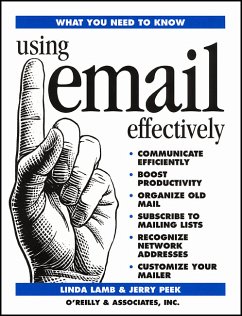When you're new to email, you're usually shown what keystrokes to use to read and send a message. You might be told about a good online help system or given some documentation that tells you about command options. That instruction is necessary and helpful, especially if you haven't had much computer experience.
But knowing the keystrokes isn't sufficient to become an effective and productive communicator. You also need to understand the context of email. In a typical business environment, it might take months or years -- and many mistakes -- to learn:
* How to organize saved mail so that you can find it again
* When to include a previous message, and how much to include, so that your reader can quickly make sense of what's being discussed
* When a network address "looks right," so that more of your messages get through the first time
* When a 'bounced' message will never be delivered and when the bounce merely indicates temporary network difficulties
* How to successfully subscribe and unsubscribe to a mailing list
* How to modify your email style depending on the expectations of your recipients
With first-person anecdotes, examples, and general observations,
Using Email Effectively shortens the learning-from-experience curve for all mailers, so that you can quickly be productive and send email that looks intelligent to others.
The book starts with an overview of help systems and basic commands for many mailers, and then looks at the context for understanding productivity, saved mail, network addressing, communication, mailing lists, and sending files.
But knowing the keystrokes isn't sufficient to become an effective and productive communicator. You also need to understand the context of email. In a typical business environment, it might take months or years -- and many mistakes -- to learn:
* How to organize saved mail so that you can find it again
* When to include a previous message, and how much to include, so that your reader can quickly make sense of what's being discussed
* When a network address "looks right," so that more of your messages get through the first time
* When a 'bounced' message will never be delivered and when the bounce merely indicates temporary network difficulties
* How to successfully subscribe and unsubscribe to a mailing list
* How to modify your email style depending on the expectations of your recipients
With first-person anecdotes, examples, and general observations,
Using Email Effectively shortens the learning-from-experience curve for all mailers, so that you can quickly be productive and send email that looks intelligent to others.
The book starts with an overview of help systems and basic commands for many mailers, and then looks at the context for understanding productivity, saved mail, network addressing, communication, mailing lists, and sending files.

